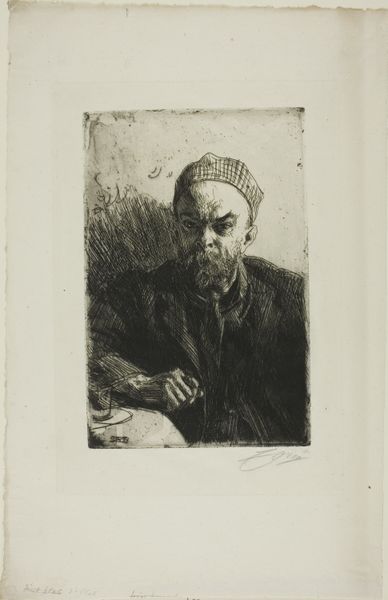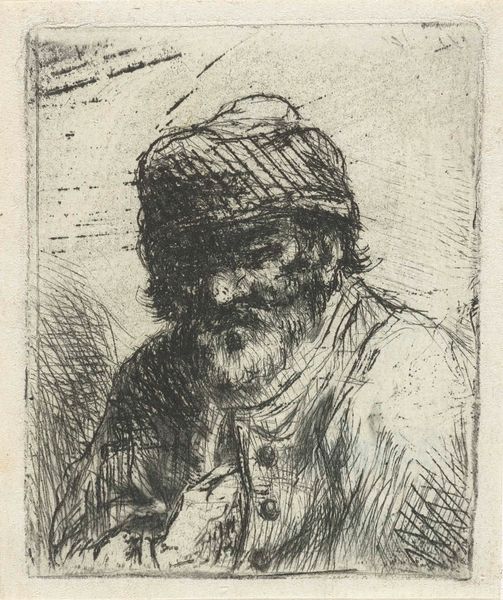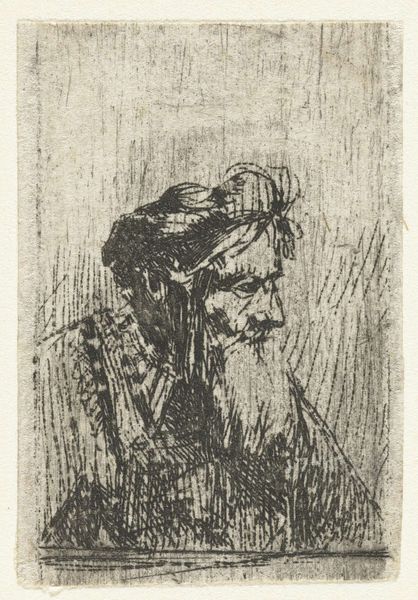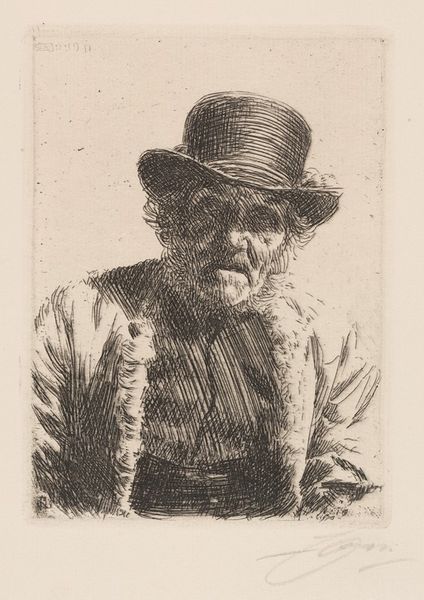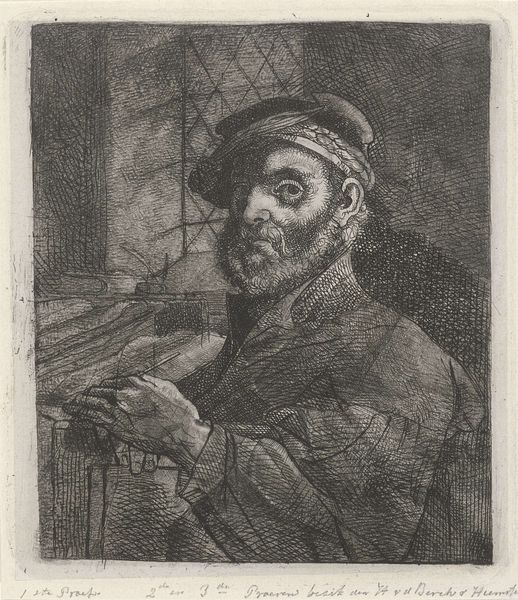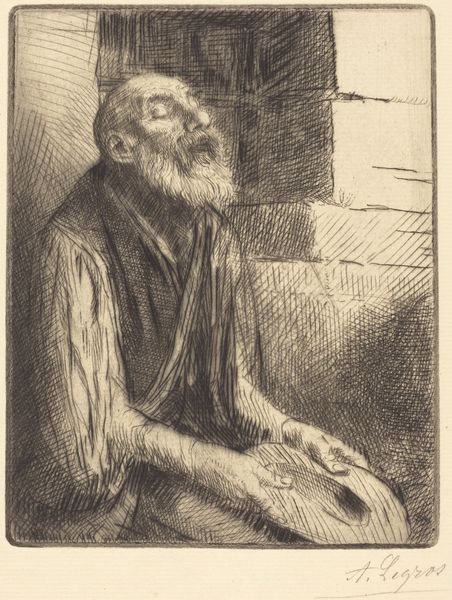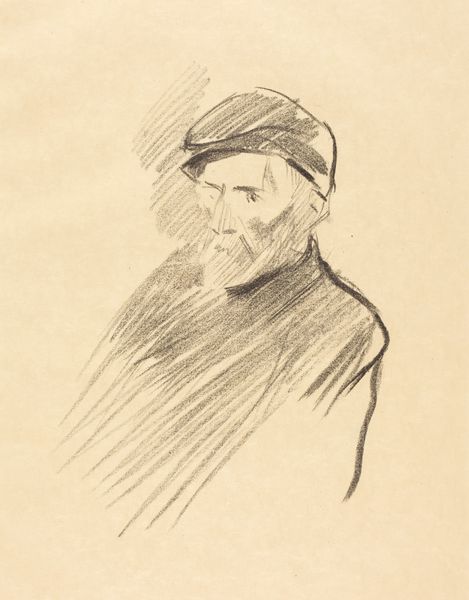
Copyright: Public domain
Curator: This etching, "Paul Verlaine," was created by Anders Zorn in 1895. What strikes you about this print? Editor: It’s intensely intimate. The hatching lines, almost nervous, convey Verlaine's penetrating gaze. I get the sense that he is a troubled person. Curator: That perception isn't far off. Verlaine's work and life were steeped in complex issues – personal struggles with alcoholism, complicated relationships with men and women, not to mention how he existed within and pushed back against norms during the height of the French Symbolist movement. His poetic explorations of the darker side of humanity resonate through Zorn’s raw portrayal here. Editor: Raw is the precise word! There is an evocative use of chiaroscuro, half the poet’s face dissolving into dense shadows. This could symbolize his own hidden depths, but more overtly, perhaps speaks to broader questions of identity for queer and otherwise marginalized people in late 19th-century Paris? Curator: Zorn has definitely captured that vulnerability. It speaks to the weight of the era and Verlaine’s own battles. Interestingly, the grid pattern on his cap contrasts sharply with the swirling lines everywhere else. Perhaps Zorn used it to illustrate an intellectual framework, and his effort to restrain inner turmoil? Editor: An intriguing interpretation. Verlaine's cap also serves as an attribute—a traditional intellectual hat that conveys genius. While I don't disagree that the etching exposes a tormented man, the carefully detailed gaze also speaks to genius, an artistic, refined spirit despite turmoil. The shadow is menacing but ultimately emphasizes an active mind. Curator: Yes, and how his hand is positioned also helps reinforce that reading, especially his pointing index finger. Editor: Right. Symbols are like that, aren’t they? Complex, personal, historical. So, on the whole, I will certainly carry a sense of complex genius, as a takeaway here. Curator: As will I. Thinking about his literary legacy in dialogue with the nuances of this etching deepens our understanding of his influence and how figures deemed "deviant" have fought for self-expression and a space in society.
Comments
No comments
Be the first to comment and join the conversation on the ultimate creative platform.
